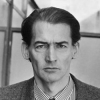Rem Koolhaas

Rem Koolhaas
Remment Lucas "Rem" Koolhaasis a Dutch architect, architectural theorist, urbanist and Professor in Practice of Architecture and Urban Design at the Graduate School of Design at Harvard University. Koolhaas studied at the Architectural Association School of Architecture in London and at Cornell University in Ithaca, New York. Koolhaas is the founding partner of OMA, and of its research-oriented counterpart AMO based in Rotterdam, the Netherlands. In 2005, he co-founded Volume Magazine together with Mark Wigley and Ole Bouman...
NationalityDutch
ProfessionArchitect
Date of Birth17 November 1944
CityRotterdam, Netherlands
Manhattan is an accumulation of possible disasters that never happen.
It's a weird city because the uglier the weather, the more beautiful the city. And the uglier the buildings, the more coherent the city.
We felt it was very important for an entity like CCTV to make its presence felt... To generate a space and to define a space, that is the main thing.
One of our theories is that one can offset this excessive compulsion toward the spectacular with a return to simplicity.
The work in S,M,L,XL was almost suicidal. It required so much effort that our office almost went bankrupt.
Manhattan has no choice but the skyward extrusion of the Grid itself; only the Skyscraper offers business the wide-open spaces of a man-made Wild West, a frontier in the sky.
The luxury of our position now is that we can almost assemble any team to address any issue.
I wanted to disconnect from contemporary architecture
Without a tighter union, Europe will disintegrate
As more and more architecture is finally unmasked as the mere organization of flow—shopping centers, airports—it is evident that circulation is what makes or breaks public architecture....
When air conditioning, escalators, and advertising appeared, shopping expanded its scale, but also limited its spontaneity. And it became much more predictable, almost scientific. What had once been the most surprising became the most manipulated.
Influence is a very unpleasant subject and I deal with it in a maybe irresponsible way, which is to really ignore it. It would be a nightmare if we started to really think about it; it would tie our hands, it would tie everyone elses hands.
The great problem of the concert hall is that the shoebox is the ideal shape for acoustics but that no architect worth their names wants to build a shoebox.
People can inhabit anything. And they can be miserable in anything and ecstatic in anything. More and more I think that architecture has nothing to do with it. Of course, that's both liberating and alarming.